MAP 5th Grade Practice Test & Expert Prep - Boost Your Scores in Math, Reading & Language
Every hour of practice brings your child closer to success.
- Start with a Free Practice Test: Take our free MAP 5th Grade practice test below to get a feel for the exam and identify areas that demand more practice.
- Ready for More? Unlock the complete practice package with 21 practice tests and 430 questions covering a wide array of MAP test skills, designed to enhance your child’s performance.
Let’s work together to ensure your child excels on the test!

Hey there! Do you have a question about the test or our practice package? Email me at roman@staggingapps.website. I'm here to help your child succeed!
Free MAP 5th Grade Practice Test (Math, Reading, Language, and Science)
Try the following sample questions (taken from our complete practice package) with your child to help them get familiar with some of the question types on the test.
The MAP 5th grade exam includes between three to four subtests, each includes between 43 to 53 questions. These subtests are Math, Reading, Language Usage (or Language Arts/ELA), and for some schools, Science.
(We’ll dive into each one in detail further down the page.)
The MAP Test is untimed and adaptive, which means it adapts its difficulty level to your child’s responses.
If your child answers a question correctly, the next one will be more challenging. If they answer incorrectly, the next one will be easier.
The general division for this difficulty level is below, at, and above grade level.
A 5th grader who answers questions incorrectly in a row will see easier questions that align with lower grade levels (even down to 2nd grade level).
Vice versa, students who answer questions correctly will receive increasingly more difficult questions, up to 7th and even 8th-grade level.
The practice questions below are divided similarly to give you and your child a feel for these levels.
NWEA MAP 5th Grade Math Practice Questions
The MAP Math test for 5th grade is designed to evaluate a 5th grader’s mathematical understanding and problem-solving abilities, ensuring they have a solid foundation for more advanced mathematical concepts.
Here are the main skills and standards that the 5th-grade MAP Math test evaluates. Use this table to understand what your child is expected to know and to identify trouble areas.
| Operations and Algebraic Thinking | Number and Operations | Measurement and Data | Geometry |
| Solving multi-step word problems with different operations | Compare, convert, multiply, and divide decimals | Compare and convert customary and metric units | Classify and identify quadrilaterals |
| Evaluating and writing numerical expressions | Multiply and divide by 2 and 3-digit numbers | Solve multi-step word problems with unit conversion | Describe and graph points on a coordinate plane |
| Identifying and finding factors | Add, subtract, multiply, and divide fractions and mixed numbers | Calculate area, perimeter, and volume | Identify, draw, and count lines of symmetry |
| Calculate ratios, rates, and unit prices | Multiply and divide by powers of ten | Create histograms and line plots | Classify various types of triangles |
Below-Grade-Level Sample Question
If your child answers a few questions incorrectly, the next question they will receive will be below grade level. Here’s an example of such a question:
The shaded portion of the figure represents a fraction. Which of the following figures shows the same fraction of the shaded area?
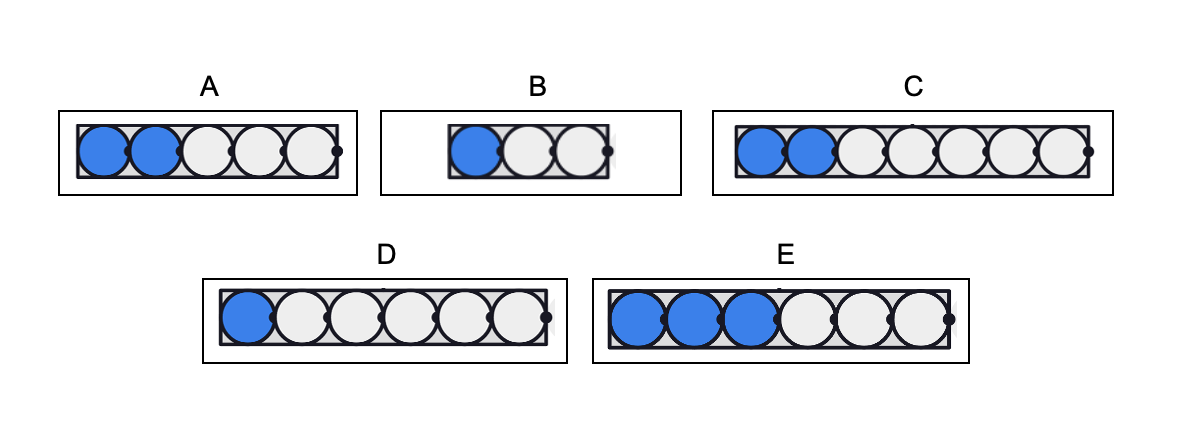
Show Answer
The correct answer is B.
The figure shows two shaded parts out of six circles. This can be represented as a fraction 2⁄6.
We can simplify the fraction 2⁄6.
Find the Greatest Common Divisor (GCD) in simplifying fractions. Determine the largest number that divides the numerator (2) and the denominator (6) equally. The GCD of 2 and 6 is 2.
Divide Both the Numerator and Denominator by the GCD:
(2÷2)/(6÷2) = 1/3
So, 2/6 is equivalent to 1/3.
Option A: There are two shaded parts out of five circles. So, it represents 2⁄5.
Option B: There is one shaded part out of three circles. So, it represents 1⁄3.
Option C: There are two shaded parts out of seven circles. So, it represents 2⁄7.
Option D: There is one shaded part out of six circles. So, it represents 1⁄6.
Option E: There are three shaded parts out of six circles. So, it represents 3⁄6.
We can simplify the fraction 3⁄6.
The GCD of 3 and 6 is 3.
Divide Both the Numerator and Denominator by the GCD:
(3÷3)/(6÷3)=1/2
So, 3/6 is equivalent to 1/2.
Therefore, Option B shows the same fraction of the shaded area 2⁄6 which is equivalent to 1⁄3.
At-Grade-Level Sample Question
If your child answers a below-grade-level question correctly, the next question will be slightly harder – at grade level. Here’s an example:
Which point on the graph shows the coordinate (4,7)?
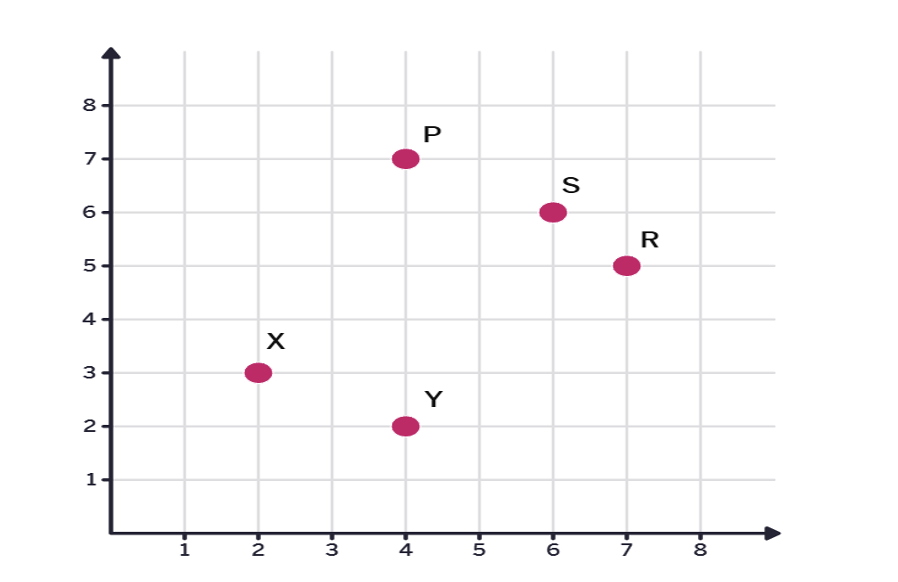
A. P
B. R
C. S
D. X
E. Y
Welcome to your trusted practice resource for the 2025 NWEA MAP 5th Grade Test!
To boost your child’s scores, help them excel academically, and secure their spots in desired programs, we have designed a structured preparation process that has helped countless students succeed:
Show Answer
The correct answer is A.
We should locate the coordinate (4,7).
A coordinate has two numbers: the x-coordinate and the y-coordinate (x, y).
The x-coordinate tells you how far the point on the graph is left or right.
The y-coordinate tells you how far the point on the graph is up or down.
Thus, point P shows the coordinate (4,7).
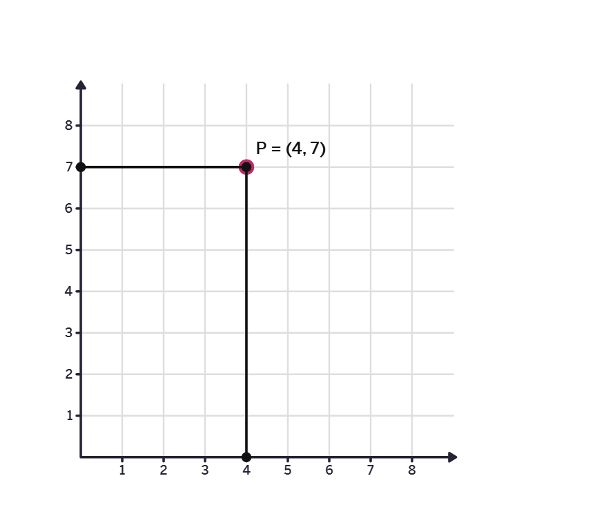
Above-Grade-Level Sample Question
These questions are more challenging for children in Grade 5 and are taken from the pool of questions for 6th and 7th grades, and even higher.
Here’s an example:
The floor measurements are shown below. Mary wants to cover it with square tiles. Which size of square tile will exactly fit the floor?

A. 7 inches by 7 inches
B. 9 inches by 9 inches
C. 11 inches by 11 inches
D. 5 inches by 5 inches
E. 24 inches by 24 inches
Show Answer
To find the size of the square tile that will fit the floor perfectly, we should determine the largest square tile that can fit evenly into both the length and width of the floor.
Floor Dimensions:
Length = 72 inches
Width = 48 inches
Find the Greatest Common Divisor (GCD): The side length of the square tile should be the largest number that divides both the length and the width without leaving any remainder. This is called the GCD.
Find the factors of 72:
72 = 1, 2, 3, 4, 6, 8, 9, 12, 18, 24, 36, 72
Find the factors of 48:
48 = 1, 2, 3, 4, 6, 8, 12, 16, 24, 48
The greatest common divisor of 72 and 48 is 24.
The largest square tile that will exactly fit the floor is a 24-inch by 24-inch tile.
Both the length and the width of the floor (72 inches and 48 inches) can be divided evenly by 24 inches. So, 24-inch tiles will cover the floor without any leftover space.

Does your child find math challenging? Don’t worry—many kids experience the same at this stage.
Encourage your child with small daily practices—they’ll build confidence as they improve.
Every bit of practice counts, and with time, your child will build strong math skills.
Looking for ways to support your child’s math skills? Get our practice package with over 140 Math practice questions designed just for them.
Boost Your Child's MAP Test Scores
Help your child prepare with a complete practice package designed to maximize their performance on the MAP 5th Grade test.
Build Confidence with Realistic Practice Tests
Master All Test Areas with 18 Quizzes in Varying Levels
Gain an Edge with Expert-Created Resources
NWEA MAP 5th Grade Reading Practice Questions
The MAP Reading Test is designed to evaluate a 5th grader’s reading comprehension and analytical skills, ensuring they have a solid foundation for understanding and interpreting various types of texts.
Below is a table summarizing the main topics and skills your child will be tested on:
| Literary Text | Informational Text | Vocabulary |
| Draw inferences and summarize a story | Determine the main idea of passages | Use context clues to find the meaning of words |
| Compare and contrast characters | Read and answer questions about various texts: famous places and people, animals, science, history, art, and more. | Identify the meaning of words with prefixes and suffixes |
| Read various fiction and answer related questions | Identify supporting details in information texts | Determine and use words with Greek and Latin roots |
| Identify, compare, and contrast points of view | Determine the order of events, cause and effects, and more | Identify and determine the meaning of similes, metaphors, allusions, idioms, and adages |
Below-Grade-Level Sample Question
Read the passage.
The Midnight Treasure
Late one stormy night, Emma and her dog, Max, explored her grandmother’s attic. Among dusty boxes, they discovered an old, locked chest. Emma’s heart raced as she found a key hidden beneath a loose floorboard. She unlocked the chest, revealing a pile of letters and a glowing amulet. Suddenly, the amulet shone brightly, and a whisper echoed, “Find the rest to unlock the secret.” Thunder roared as Emma realized this was only the beginning of a thrilling treasure hunt.
What is the climax of the story?
A. The storm begins outside one night.
B. Emma finds a key beneath a loose floorboard.
C. Emma opens the chest and discovers the glowing amulet.
D. Emma decides to explore her grandmother’s attic with her dog Max.
Show Answer
The correct answer is: C. Emma opens the chest and discovers the glowing amulet.
This is correct because the climax is the most exciting and important part of the story. When Emma opens the chest and finds the glowing amulet, the mystery deepens, and everything changes. This moment leads directly to the next part of her adventure and grabs the reader’s attention.
Choice A. This is incorrect because the storm sets the mood for the story, but it is not the most exciting or important event. It happens early on, before the big turning point in the story.
Choice B. This is incorrect because finding the key is a key step in the story, but it’s just a build-up, a rising action, that leads to the climax. It’s not the most exciting moment that moves the story forward.
Choice D. This is incorrect because deciding to explore the attic happens at the beginning of the story. It starts the adventure but doesn’t have the same excitement as when Emma opens the chest and discovers the amulet.
At-Grade-Level Sample Question
Read the paragraph.
In the museum, visitors could see many artifacts from the early history of the United States. Some items were from the years leading to the Civil War, showing how people lived the antebellum way of life. There were old documents, tools, and even clothing that people wore. The exhibits painted a picture of life before the war, when the country was still struggling with issues like slavery.
What is the meaning of the prefix “ante-” in the word “antebellum”?
A. After
B. Between
C. Before
D. During
Show Answer
The correct answer is: C. Before
The word antebellum comes from Latin, where “ante” means before and “bellum” means war. Together, antebellum means before the war.
In the context of the paragraph, the “antebellum way of life” indicates a time before the Civil War in the United States of America.
Choice A. “After” is incorrect because ante- refers to something that happens before, not after.
Choice B. “Between” is incorrect because ante- does not mean something in between events, but rather something that happens earlier in time.
Choice D. “During” is incorrect because ante- refers to a time before the event, not during it.
Above-Grade-Level Sample Question
Read the passage.
Richard has been working on his science project all week. He spent countless hours researching and putting everything together, but as the deadline approached, he felt like he was running out of time.
“I can’t keep up with this anymore!” he said, looking at the clock.
Just then, his friend Ben popped in and offered to help.
“Don’t worry, I’ll give you a hand. We’ll get this done in no time.”
Richard smiled, feeling a little better. He was thankful for Ben’s offer.
Which of the following is an idiom?
A. He spent countless hours researching and putting everything together.
B. He felt like he was running out of time.
C. His friend Ben popped in.
D. I’ll give you a hand.
Show Answer
The correct answer is: D. I’ll give you a hand.
This is an idiom, which means to help someone. It doesn’t literally mean that Ben is going to give Richard his hand, but that he’s offering assistance. The phrase is figurative.
Choice A. This is not an idiom. It is a literal statement that describes Richard working on his science project for a long time. It doesn’t have a hidden meaning—it just means he spent a lot of time working.
Choice B. This is not an idiom. It is a literal expression, meaning Richard felt like there wasn’t enough time left to finish his project. It does not have a figurative meaning beyond what is stated.
Choice C. This is not an idiom. This phrase means Ben came into the room or showed up unexpectedly, but it is used literally. It doesn’t have a hidden meaning or figurative sense.
NWEA MAP 5th Grade Language Usage Practice Questions
This test is designed to evaluate a 5th grader’s proficiency in language usage, ensuring they have a solid foundation in writing and grammar skills. This test is also known as the MAP Language Arts or MAP ELA test.
Here’s a table outlining some of the key components of the NWEA MAP 5th Grade Language Usage section:
| Language: Understand, Edit for Grammar, Usage | Language: Understand, Edit for Mechanics | Writing: Write, Revise Texts for Purpose and Audience |
| Form and use past, present, future, progressive, and perfect tenses | Use commas correctly with series, addresses, dates, and places | Choose the best topic and concluding sentences |
| Identify prepositions | Form regular plurals | Distinguish facts from opinions |
| Identify and use conjunctions | Identify and correct errors with plural and possessive nouns | Sort and identify sensory details, emotions, and traits |
| Identify, create, and order simple, compound, and complex sentences | Use and correct errors with frequently confused words | Find the difference between related words |
Below-Grade-Level Sample Question
Choose the sentence that is correctly punctuated with commas:
A. We went to the zoo, and saw the lions, tigers, and bears.
B. After the party, we all went home, and rested after a long day of fun.
C. I enjoy playing sports especially soccer and running in the park every weekend.
D. Sarah invited her best friend, Anna, to her birthday party, which was held at the park.
Show Answer
The correct answer is D.
The commas are correctly placed around the name “Anna” (nonessential information) and after “birthday party” before the extra detail about where it was held.
Choice A. The comma before “and” is unnecessary here, as it is not part of a list of three or more items.
Choice B. The comma before “and” is not needed, as there are no separate clauses.
Choice C. This sentence is missing commas around “especially soccer” to separate the nonessential information.
At-Grade-Level Sample Question
Read the sentences.
1. After the experiment, the students cleaned their workstations carefully.
2. The teacher explained the steps of the experiment to the class.
3. The students mixed the chemicals in a beaker to observe the reaction.
4. Before starting the experiment, the students put on their safety goggles.
Identify the correct order of the sentences in this paragraph.
A. 2, 4, 3, 1
B. 4, 2, 3, 1
C. 2, 3, 4, 1
D. 3, 2, 4, 1
Show Answer
The correct answer is: A. 2, 4, 3, 1
The teacher explains the experiment (Sentence 2), then students put on safety goggles (Sentence 4), followed by mixing chemicals (Sentence 3), and finally, cleaning up (Sentence 1).
Choice B: This is incorrect because the teacher explains the experiment after the students put on their safety goggles. The explanation should come first.
Choice C: This is incorrect because the students need to put on safety goggles before starting the experiment, not after the teacher explains it.
Choice D: This is incorrect because the students start the experiment (Sentence 3) before the teacher explains the steps (Sentence 2), which doesn’t make sense in this order.
Above-Grade-Level Sample Question
Which sentence is not grammatically correct?
A. By the time we arrived, he had already begun eating his dinner.
B. She began writing her book after graduating from college.
C. The children had began playing outside before the rain started.
D. I have begun practicing the piano every day to prepare for the recital.
Show Answer
The answer is C.
The verb “began” is the simple past tense and cannot be used with “had.” The past participle form “begun” should be used with “had.”
Choice A: The verb “begun” is correctly used as the past participle with “had” to form the past perfect tense, which describes an action that was completed before another past action (“we arrived”).
Choice B: The verb “began” is correctly used in the simple past tense to describe a single completed action that happened in the past (“after graduating from college”).
Choice D: The verb “begun” is correctly used as the past participle with “have” to form the present perfect tense, which describes an action that started in the past and continues into the present (“I have begun practicing every day”).
Give Your Child the Tools to Excel & Score High
Get the complete practice package and access 430 Practice Questions & Explanations in Math, Reading, and Language Usage.
Only $49
NWEA MAP 5th Grade Science Practice Questions
Below-Grade-Level Sample Question
A student observes butterflies in a garden over the course of a year. They notice a recurring pattern in how the butterflies develop and change throughout their lives.
Which changes did the student most likely observe during the year?
A. The butterflies laid eggs that immediately turned into adult butterflies without any other stage in between.
B. The butterflies went from eggs to small adults that only grew in size but did not change form.
C. The butterflies grew only larger wings as they aged, remaining in the same form from birth to adulthood.
D. The butterflies hatched from eggs, then developed into caterpillars (larvae), formed chrysalises (pupae), and finally emerged as adult butterflies.
Show Answer
The correct answer is D.
Butterflies undergo complete metamorphosis. This process includes four distinct stages:
Egg: The starting point of life.
Larva (Caterpillar): The stage where the butterfly grows rapidly.
Pupa (Chrysalis): A transformative stage where the caterpillar reorganizes its structure.
Adult: The final stage, emerging as a fully formed butterfly.
Option D correctly outlines these stages.
At-Grade-Level Sample Question
A group of students built a marble roller coaster. The marble starts on a raised platform, rolls down a track, and attempts to climb a hill. However, it never makes it over the top of the hill. The only initial height allowed is 20 cm (to match the project’s constraints).
Which of the following changes would most likely help the marble successfully get over the hill?
A. Lower the hill so the marble needs less energy to reach the top.
B. Add small bumps before the hill so the marble’s speed decreases gradually.
C. Place the hill farther away, giving the marble more time to slow down.
D. Use a track with a rougher surface to increase friction before reaching the hill.
Show Answer
Correct Answer: Option A.
Lowering the hill reduces the amount of gravitational potential energy needed for the marble to reach the top.
Since the marble starts with a fixed amount of potential energy, decreasing the hill’s height allows the marble to overcome the hill without needing additional energy, ensuring it has enough kinetic energy at the base of the hill to ascend it.
Above-Grade-Level Sample Question
In certain regions, violent rotating columns of air known as tornadoes often develop when two contrasting air masses collide.
Which statement best describes how the clash of these air masses can lead to tornado formation?
A. When warm, dry air meets cool, dry air, the lack of moisture prevents tornadoes from forming.
B. When stable air masses linger over an area, the lack of motion typically triggers tornadoes.
C. When a warm, humid air mass meets a cooler, drier air mass, the resulting instability can create powerful thunderstorms and potentially spawn tornadoes.
D. When a cool air mass displaces a warm air mass over a large body of water, hurricanes form, but not tornadoes.
Show Answer
Correct Answer: C
Tornadoes are most likely to form when warm, moist air at lower levels meets cooler, drier air above. This creates instability in the atmosphere and can produce strong updrafts.
Within these powerful thunderstorms, rotation may develop, resulting in the formation of a tornado. The temperature and moisture differences between the two air masses play a critical role in fueling the necessary wind shear and convective activity.
Maximize Your Child’s Scores with the Complete MAP Practice Package
The 5th Grade MAP Practice Package covers the topics seen on the actual test and will help improve your child’s skills and knowledge and maximize their score potential.
Here’s what’s included:
3 full-length practice tests and 18 quizzes
With 430 Math, Reading, and Language Usage questions, your child will practice in a format that mirrors the real MAP test.
Practice at the right level
The quizzes are designed with varying difficulty levels to match your child’s current skills while gently challenging them and encouraging growth.
Detailed explanations for every question
Mistakes become stepping stones. Each question includes a clear, child-friendly explanation to strengthen understanding.
Score reports to track progress
Get a clear picture of where your child is excelling and what areas need extra attention.
Created by teachers and experts
This package was developed with math and English Language Arts educators to ensure accuracy and quality, aligning with the MAP test topics and Common Core State Standards.
And because we want you to feel confident in your choice, we back this package with our 100% Satisfaction Guarantee.
Start today and give your child the tools they need to thrive and succeed!
See What's Included:
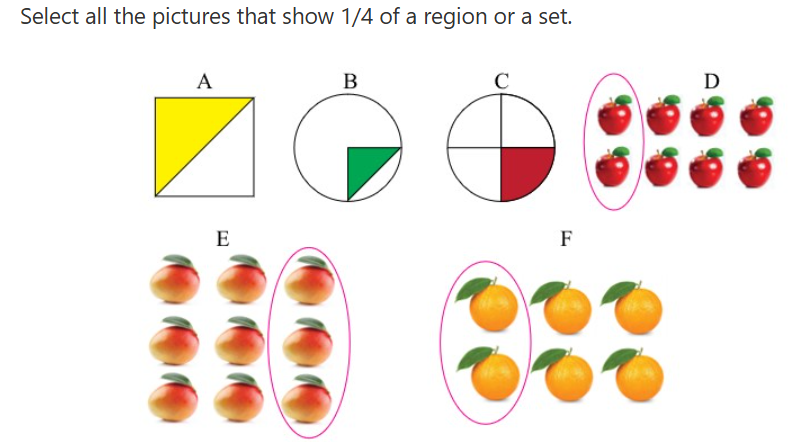
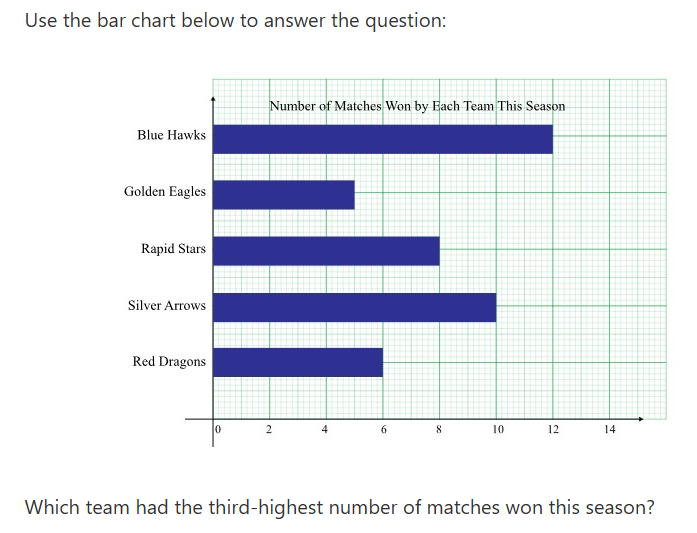
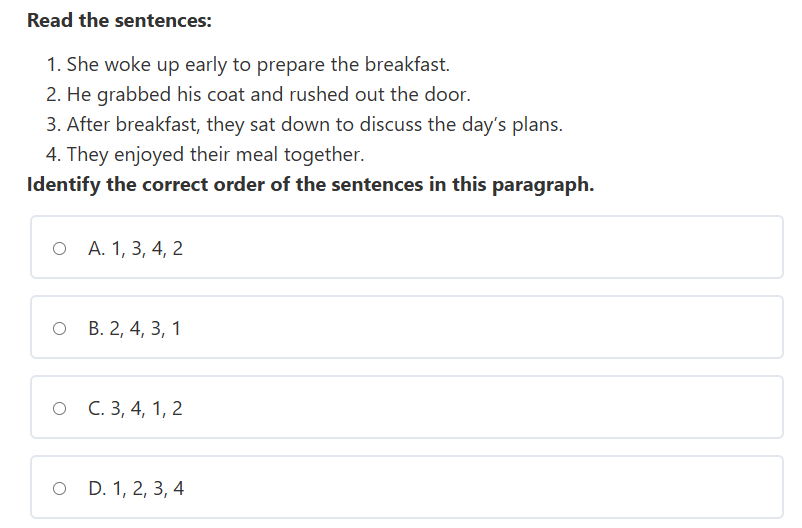
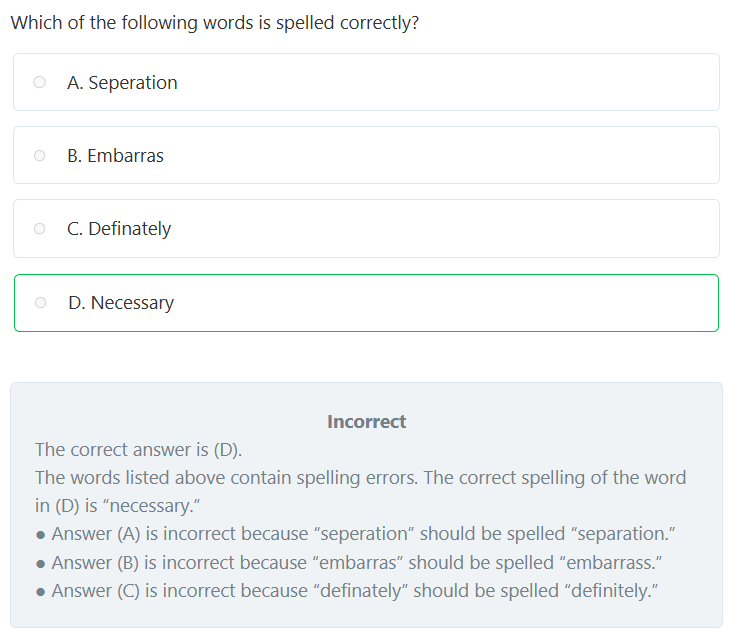


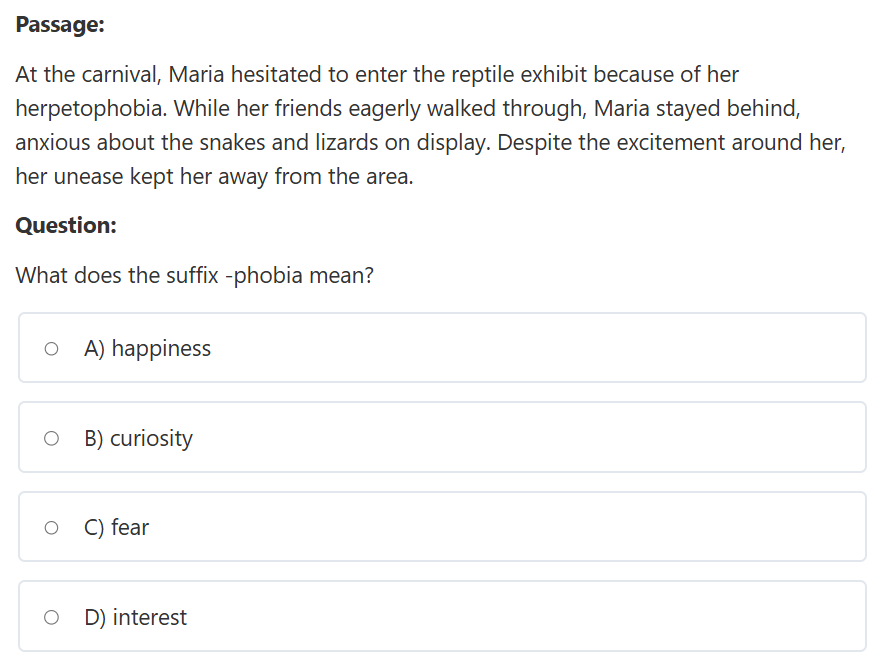
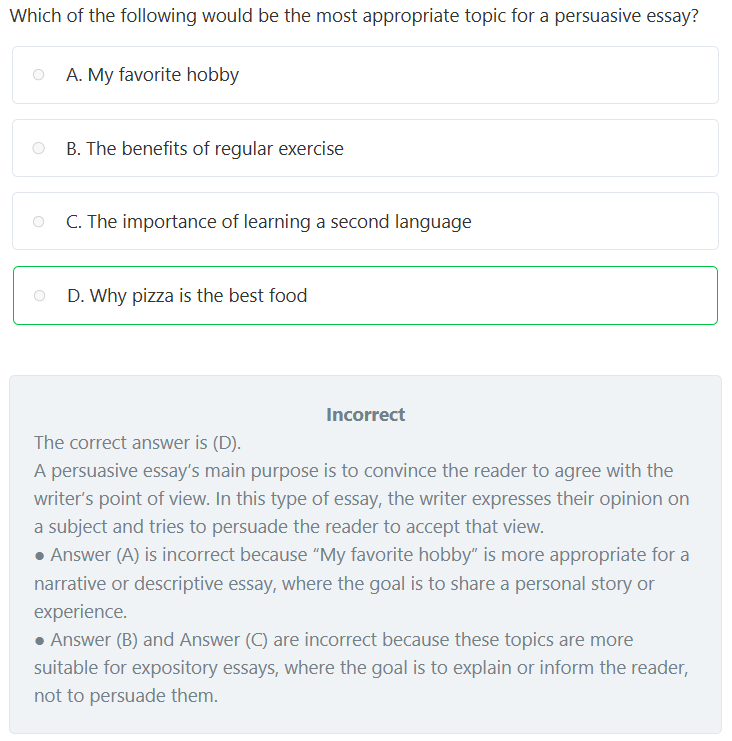
Course Content
One-time Payment & 6-Month Unlimited Access
MAP Scores for 5th Grade – What They Mean & How to Use Them
The NWEA MAP test gives your child a score called an RIT score, which shows what level of questions they can answer correctly about half the time.
This score helps teachers and parents understand your child’s current academic level and how much they’ve grown over time.
The RIT score is not tied to a specific grade. This means it can track your child’s progress as they move from one grade to the next.
It gives a consistent way to see how your child is doing in different subjects like math, reading, and language.
Parents and teachers can use these scores to see what your child is already good at and where they might need more help.
This helps everyone work together to set goals and choose the right materials to support learning.
Average RIT Score Ranges for Students in Grade 5
The table below shows typical RIT score ranges for 5th-grade students, from the lowest to the highest levels in math, language usage, and reading.
| Achievement Level | Mathematics | Language Usage | Reading | Percentile |
|---|---|---|---|---|
| Higher Achievement | 234 | 228 | 231 | 95 |
| 224 | 219 | 221 | 84 | |
| 217 | 211 | 213 | 69 | |
| Median and Mean | 209 | 204 | 204 | 50 |
| Lower Achievement | 202 | 197 | 196 | 31 |
| 194 | 190 | 188 | 16 | |
| 184 | 180 | 178 | 5 |
3 Tips for Using These Scores to Help Your Child Improve
- Use the Scores to Find Learning Gaps: If your child scores lower in one subject area, focus extra attention there. Use targeted practice, as you can find on this page, to strengthen understanding and proficiency.
- Focus on Growth, Not Just Percentiles: Instead of only looking at where your child ranks, pay attention to whether their RIT scores are increasing over time.
- Set Small, Realistic Goals: Work with your child to set short-term goals for improvement before the next test. Celebrate small wins to keep motivation high.
Help Your Child Score High on the MAP 5th Grade Test
Your child deserves the best preparation to feel confident and perform their best on the MAP test. That’s why we’ve created a thorough practice package tailored specifically to meet their needs.
Comprehensive Practice
Access 430 practice questions across Math, Reading, and Language Usage, carefully designed to cover essential skills tested on the MAP.
Skill-Focused Quizzes
Build your child's confidence and abilities with targeted quizzes that focus on strengthening their knowledge in key subject areas.
One-time Payment & 6-Month Access
100% Satisfaction Guarantee

